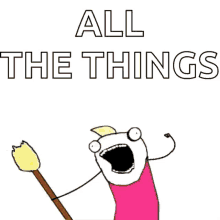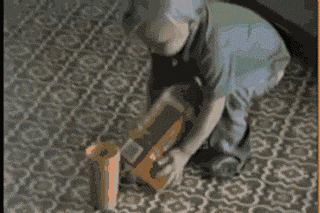Data Visualization and Mental Decluttering
“A good chart widens our imagination and enhances our understanding by providing insights from numbers.” - Alberto Cairo, How Charts Lie
After dabbling for about a year, I started learning to code full-time one year ago this month. I've stuck to this path for a full year, every day either coding or reading about coding. Over the last few weeks, I've been feeling stressed and tired, diagnosed anemic, and I realized that I've gotten off balance.
(update as of January 2021: this post was written in September 2021 - in October 2021, I was sent to the hospital and eventually diagnosed with non-hodgkins lymphoma. If you feel bad for a while, have a cough that won't go away and elevated heart rate for seemingly no reason - go to the doctor!
Anyway... continuing as before... )
So, it's time to pivot, make a little change, a little iteration, learn from it and do better going forward.
And I'm sure I'm not the only one going through this. We're all learning to code, and we all have things we need to balance.
Last week, I listened to this episode of the MindShift podcast, about the impact of learning data science in high school; how it can level the playing field for underfunded schools or kids who are in danger of dropping out due to falling behind in math. It can also help young people learn media literacy, boost their problem solving skills, and their confidence navigating the world.
Then this week, I found the 2019 documentary "This Changes Everything" on Netflix, presented by the Geena Davis Institute on Gender and Media. During the silent film age, about half of directors were women. When "talkies" began, they needed to be filmed in large studios where they could control the sound. The studios needed investment from the banks to build the huge warehouses. And the banks would only loan to men. Female directors dropped to about 5% by the 1940s... and is still there today, partly due to unconscious bias. The Geena Davis Institute on Gender in Media worked to get the actual data comparing the number and types of male and female roles, then used that data to convince the industry of the need for change.
Director Maria Giese's activist work and data-finding on female directors led to an ACLU campaign against discrimination and an Equal Employment Opportunity Commission investigation that's still ongoing.
“A good chart widens our imagination and enhances our understanding by providing insights from numbers.” ― Alberto Cairo, How Charts Lie: Getting Smarter about Visual Information
Data visualization has the power to change hearts and minds, culture, health outcomes.... everything.
So, I started exploring d3.js through Educative.io. D3 stands for "Data-Driven Documents", and is a JavaScript library for data visualization. Educative's course is nicely cut into two parts. The first covers DOM manipulation, method chaining, data binding, and data loading. The second goes through visualization concepts and SVG (used to draw shapes), working with maps and graphs, and network visualization.
In addition, I attended OwnTrail's online event focused on " Mental Decluttering ".
Mental Clutter is anything that makes you feel overwhelmed. Your brain is in overdrive, and you can't focus. Being overloaded negatively affects us - it adds stress and can lead to procrastination and poor decision making. It can include things like information overload, expectations of self and others, tasks, and negative feelings.

How do we clear our mental clutter?
We dump it out!

Brain Dump: When feeling overwhelmed with ALL THE THINGS, dump it all out. Take three minutes, and write everything that you're thinking about. This includes tasks, thoughts, ideas, errands, worries, etc. Get it all out.
Categories: Next, take what you've written and organize it into categories. Just three to five or so. They can be work/home/self-care. They can be work/school/kids/PTA/self-care, or house-remodel/school/caregiving. Whatever fits your life and needs.
Pull the items from the brain dump and place them into the categories.

If a project is overwhelming, break it down into tasks. Then add the tasks to your to-do list.
Don't forget to assign the time to do those tasks!
Gigi also recommends color coding your tasks by category, which will allow you to see if your list is imbalanced. Are you making time to exercise? For reading to your kids everyday? Calling your mom? Eating breakfast? Rest?
What do you worry about most? Work? Family? Are there tasks you can delegate? What is most important to get done today, this week, this year?
Does your task list reflect your values? Are you spending your time on things that matter to you?
And of course, physical decluttering is helpful as well!
What are you coding and caring about this week?

